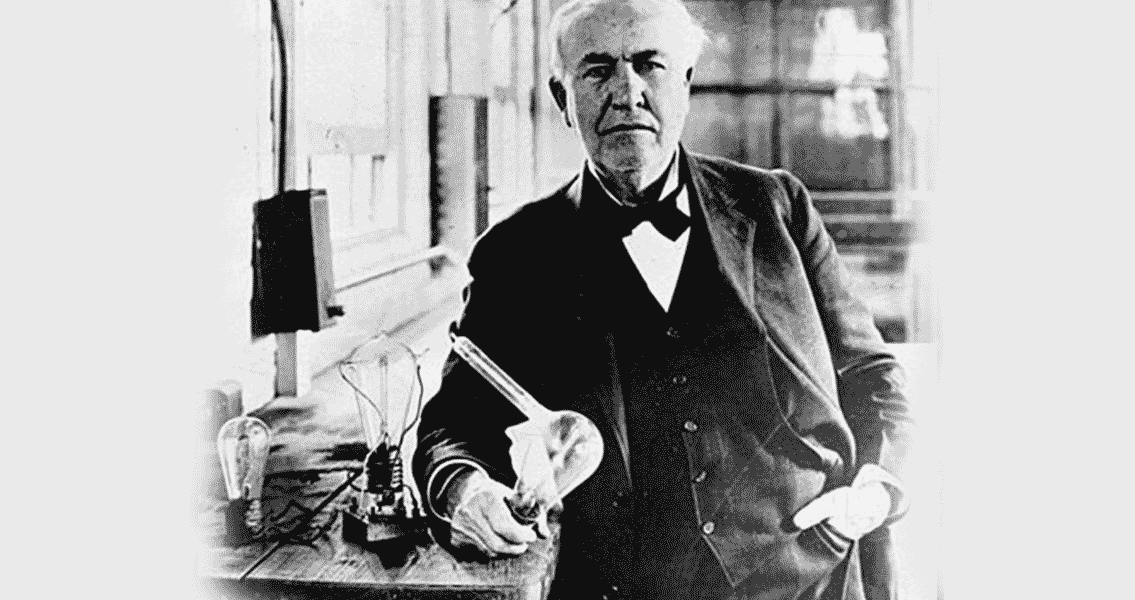<![CDATA[On 22nd October 1877 Thomas Edison perfected the carbonised filament light bulb. For a man responsible for contributing so much innovation to the modern world, the modern light bulb is still the invention that first springs to mind for many people when they hear the inventor's name. The perfection of the carbonised filament was the crucial first step in the widespread distribution of electrical light. Thomas Alva Edison was born in 1847 in Ohio. Although his story is often romanticised into a rags to riches tale, he was in fact the seventh child in a reasonably stable middle class family. Suffering scarlet fever from a young age, he endured a hearing impediment for much of his school life, an ailment that would deteriorate into near total deafness in his adulthood. His inclination towards brilliance and innovation is sometimes attributed to his disability as it forced him to develop means of self education and independent learning. Edison's family moved to Michigan in 1854. His education was further disrupted by hyperactivity and tendency to be easily distracted. After just twelve weeks in a public school his mother was left with no choice but to withdraw him and provide home schooling. Again, what could be viewed as a hindrance to Edison's education allowed him to set off on his own eccentric path. In later life Edison often spoke of the vital importance his mother played in nurturing his future success. In a modern school Edison would probably have been diagnosed with ADHD (Attention Deficit Hyperactivity Disorder). His mother seems to have realised early on the potential he held, and worked hard to encourage his gifts. Famous as much for being an entrepreneur as an inventor, Edison demonstrated his eye for a business opportunity when still a teenager. When he was fourteen he started his own small business selling newspapers and snacks at a local railroad. Realising the opportunity presented through access to news stories being teletyped into the station each day, Edison started his own newspaper, the Weekly Herald. The paper only had a small circulation of roughly three hundred subscribers, but it was pioneering by being the first type-set printed newspaper sold on a train. By 1860 Edison's paper had been mentioned in an English journal, hinting at the fame and success which was to come. By the time Edison perfected the carbonised filament he had already filed several patents and become a known and respected businessman. In 1878 the Edison Electric Light Co. was set up to focus on the development of electric light. The company worked not only on the refinement of an incandescent light bulb, but the creation of an electrical lighting system that could be installed in a city. In 1882 the company was in a position to publicly demonstrate its new technology in Lower Manhatten, providing enough electrical lights to illuminate City Hall and the premises of two newspapers. Electric light was just one of many groundbreaking inventions by Edison. He also contributed massively to the development of telephone communication, the phonograph and motion picture recording. What's more, he played a central role in the development of modern intellectual property laws. In 1874 he was successfully sued by his employer's Western Union for selling the rights of his quadruplex phone system to one of their rivals. He learned from the experience, and went on to develop a reputation for aggressively and sometimes controversially protecting his intellectual property from rivals, imitators, and even employees, as in the case of Nicola Tesla. Edison played a key role in the development of a great deal of the technology we use today, however he also led the way in the murkier end of corporate ownership of ideas.]]>
Thomas Edison and the Birth of Electric Light
